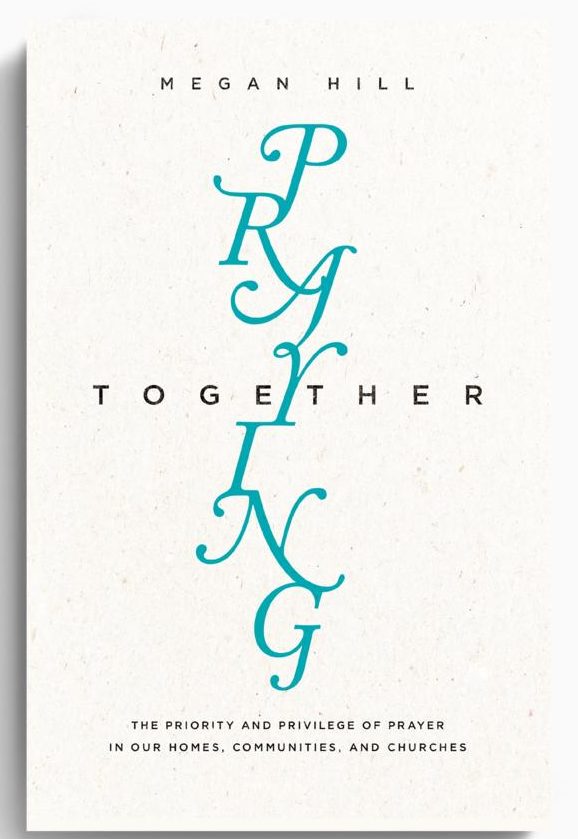CHAPTER 1
Relationship
A Christian never prays alone.
Thinking about prayer, we might first call to mind a picture of a lone man on his knees behind closed doors. We might think of him as solitary and his activity as private. But prayer is never solitary. It is communication from one to another. And so this book about praying together must begin with the foundational reality that prayer is an activity of relationship: God and us, God and God, all of us and our God.
God and Us
In 2012, when my husband and I walked through the gates of an orphanage in Addis Ababa, Ethiopia, we were immediately stampeded by twenty-five children. They grabbed at our backpacks, jabbed exploring fingers into our pockets, and repeatedly demanded our attention with the only English words they knew: “Mommy, Mommy, Mommy!” and “Daddy, Daddy, Daddy!”
Those little ones knew the language of family and the gestures of asking, but twenty-four of the children had no right to use them. And though we gave candy and balloons to every child, there was only one little boy whose cries to us of “Mommy” and “Daddy” were absolutely compelling.
This was the child with whom we had a relationship—having just appeared before a judge in a courtroom to secure his adoption—and this child alone could reach into our pockets with every assurance that he’d be granted whatever treat he could find there.
So, too, prayer is an activity of relationship. God placed the newly created Adam and Eve in the garden, and he spoke with them (Genesis 2:16–17; 3:2–3). Relationship is an essential part of our created nature (though now corrupted by sin), and communication is a crucial element of that relationship.
In the introduction I defined prayer, in part, as “an offering up of our desires unto God.” Immediately, this tells us that prayer requires at least two participants: someone with desires and God. And Christ taught his disciples to pray “Our Father” (Matthew 6:9), establishing our prayers as the confident communication of a child with his parent.
Many people don’t understand that prayer is intimately relational. Sociologist Christian Smith exhaustively studied the religious life of American teens and young adults and then famously described their attitude toward God as “moralistic therapeutic deism.”
By this Smith meant, in part, that “God is treated as something like a cosmic therapist or counselor, a ready and competent helper who responds in times of trouble but who does not particularly ask for devotion or obedience.”
An example of this kind of no-relationship-necessary perspective on prayer comes at the beginning of a recent best seller: Prayer is “communication from the heart to that which surpasses understanding. Let’s say it is communication from one’s heart to God. Or if that is too triggering or ludicrous a concept for you, to the Good, the force that is beyond our comprehension but that in our pain or supplication or relief we don’t need to define or have proof of or any established contact with.”
And even 450 years ago, John Calvin lamented that people in his day were practically praying: “O Lord, I am in doubt whether thou willest to hear me, but because I am pressed by anxiety, I flee to thee, that, if I am worthy, thou mayest help me.”
In these ways of thinking, prayer can never be an activity of relationship because this kind of God is not particularly interested in relationship, and our prayers to him don’t depend on it.
Prayer becomes merely the submission of a list of desires and complaints with scant hope of personal engagement on the receiving end. Unloading my concerns might make me feel lighter, but it doesn’t make me less lonely. I can pray, but God might not pay any attention.
For a Christian, prayer always expresses a relationship: with the Father, through the work of the Son, by the power of the Spirit. However, even those of us who understand the relational foundation of prayer rightly pause at the audacity of shrieking, “Daddy! Daddy!” and grabbing at God’s backpack. Prayer is an activity of relationship, but it is not a relationship of equals.
For one thing, God is the high and holy Creator, and man is the creature. The foundation of what we know about God and about mankind is this statement: “Then the Lord God formed the man of dust from the ground and breathed into his nostrils the breath of life, and the man became a living creature” (Genesis 2:7 ESV). Before Adam was a person, he was dirt.
God, on the other hand, is the one who sits above the circle of the earth and the one is who is beyond comparison (Isaiah 40:22, 25). It is not merely old-fashioned convention or literary metaphor that calls God “King” and “Lord” and “Judge” and “Ruler.”
Therefore, we dust-people approach God—relate to God—only on his terms. Like Queen Esther, we must wait for the king to extend his royal scepter toward us. It’s amazing that he does. In the garden, the Creator of the world condescended to his creation, and they had a conversation.
But then sin entered the world, and since Adam’s fall, mankind has been estranged by his own willful wickedness from the holy God, who “cannot look at wrong” (Habakkuk 1:13 ESV). The very words God uses to describe sinful people are anti-relational: enemies, strangers, aliens, separated. God may speak to us, but we dare not speak to him. Like Isaiah, we need a burning coal to purify our lips.
To know what effect our sin has on our right to pray, we must go to the cross. Here at Golgotha, the God-man shoulders the wrath of God in our place, and here we find a prayer that is the most horrific to ever be uttered. Here, our condemned Savior cries out, “My God, my God, why have you forsaken me?” (Mark 15:34 ESV). And there is no answer.
Forsaken by God, cut off from relationship to the Father, Jesus’s prayer as the accursed sin bearer was met only with silence. Seminary professor Edmund Clowney used to tell his students, “You haven’t heard the cry of the Son until you’ve heard the Father who didn’t answer.”
What do our prayers justly deserve? Silence. And yet the God who rejected the prayer of the wrath-bearing Son accepts our prayers because of him. In the glorious words of the book of Hebrews:
Therefore, brothers, since we have confidence to enter the holy places by the blood of Jesus, by the new and living way that he opened for us through the curtain, that is, through his flesh, and since we have a great priest over the house of God, let us draw near with a true heart in full assurance of faith, with our hearts sprinkled clean from an evil conscience and our bodies washed with pure water. (Hebrews 10:19–22 ESV)
The Bible repeatedly describes our entry into the Christian life in terms of relationship. We who were once far off have been brought near to God (Ephesians 2:13). The familial words used in Scripture—God the Father, Christ the elder brother—are indicators that a life of faith is a life of relationship. When we trust in Christ for our salvation, we begin a relationship with the triune God. By our adoption and our union with Christ, we become part of God’s family, with all the privileges of children in their father’s house.






